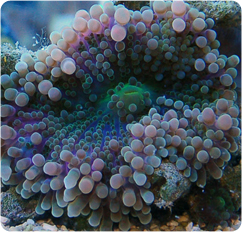


florida has a small mouth that is usually not surrounded by tentacles. Ricordea species are simply called ricordeas most of the time due to their unique longer-tentacle appearance and can only be classified into Ricordea florida or R. Some types of Rhodactis may be named after their color combinations as well, but this genus also contains ‘bounce’ mushroom coral variations. While members of Actinodiscus/Discosoma, Rhodactis, and Ricordea are generally referred to as mushrooms, many mushroom corals have been given specific names with more rare and expensive variations being assigned brand names.įor example, members of Actinodiscus/Discosoma are typically named after their colors, like red and blue mushroom corals. Instead, to most of us, these corals resemble the dome-shaped top and stalk of a terrestrial mushroom, earning them their most common name.

Interestingly, members of the Corallimorpharia Order are very similar in morphology to SPS (Scleractinia Order), though this is difficult to see without looking at polyp segmentation. As we’ll see later, this makes for easy propagation of the coral. The mushroom coral is a soft coral, which means that it does not produce a hard calcium carbonate skeleton like large polyp stony corals (LPS) or small polyp stony corals (SPS). However, most coral species in the reef aquarium trade belong to the Actinodiscus/Discosoma, Rhodactis, and Ricordea genera, which are collectively referred to as mushroom corals. The Corallimorpharia Order 1 is a large taxonomic category containing nearly 50 species. Mushroom corals, or mushroom anemones, can spread very quickly and are often found in large colonies, covering rocks and other structures, including other corals. Most notably, they can be found in Australia, Tonga, Indonesia, with some of the most popular species originating from the Caribbean, namely from the coasts of Florida. These corals do not need much light and thrive in low flow environments. Mushroom corals are found throughout most temperate to tropical marine ecosystems. Purples, blues, greens, oranges, yellows, reds Widespread in temperate to tropical waters major origins include Australia, Tonga, the Caribbean, and Indonesia Various – Corallimorphidae, Disosomatidar, Ricordeidae, and Sideractiidae Mushroom corals, mushroom anemones, disc anemones, and false corals, but commonly named after physical attributes where possible most commonly found in the reef aquarium hobby) Let’s dive in and learn how awesome these corals are! A Brief Overview of the Mushroom Coral Scientific NameĬorallimorpharia Order ( Actinodiscus/Discosoma spp., Rhodactis spp., and Ricordea spp. With the popularity of bounce corals and jawbreaker mushrooms, there is a mushroom coral for everyone! They will fulfill the needs of a reefer who is just starting out and satisfy the hobbyist looks for the most exotic corals they can buy. These wonderful corals are not only easy to growth, but also come in a variety of colors. Looking for a colorful and easy to care for coral? A Mushroom Coral is as easy as it gets when it comes to easy coral care. Chloroquine Phosphate Aquarium Dosing Calculator.


 0 kommentar(er)
0 kommentar(er)
